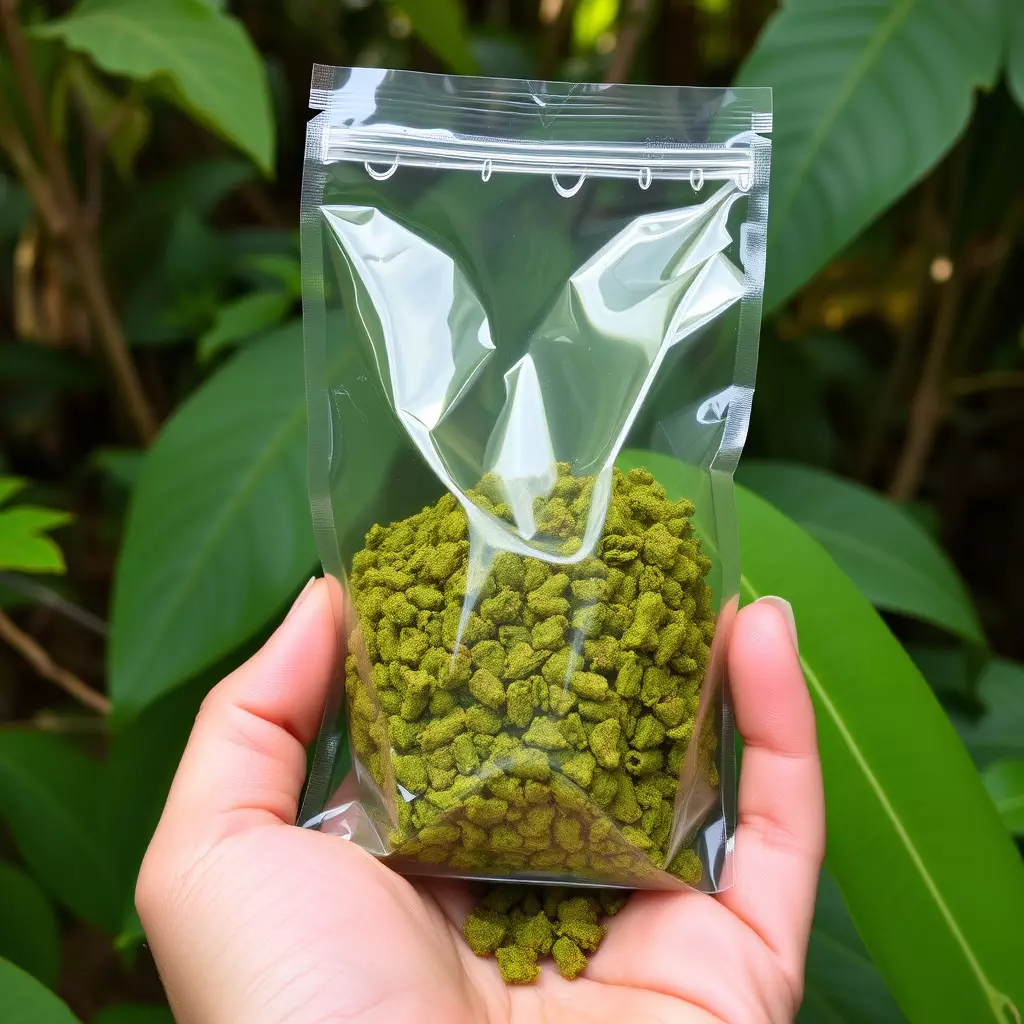Research indicates that kratom, derived from the Mitragyna speciosa tree, may offer promising benefits for emotional regulation due to its active compounds mitragynine and 7-hydroxymitragynine. These compounds engage with opioid receptors in the brain, potentially enhancing mood by influencing serotonin and dopamine pathways. Kratom has been traditionally used for its stimulant and sedative effects, and recent studies suggest it can help temper emotional reactivity, allowing for a more measured approach to stress. However, its dependence potential and the lack of comprehensive long-term effect data necessitate careful consideration and professional advice before incorporating kratom into wellness routines. Users should be mindful of dosage and strain selection to maximize benefits, with varying effects depending on these factors as well as individual physiology. For instance, Maeng Da strains offer a balanced effect for stress management, while White Vein strains provide an uplifting experience that can improve mood. It is imperative to adhere to local laws, use kratom responsibly, and avoid combining it with other substances, especially when exploring its role in emotional regulation.
Exploring the intricate relationship between kratom and emotional regulation, this article delves into the science behind how this botanical substance can temper emotional responses. We will examine the mechanisms that underpin kratom’s potential to mitigate emotional reactivity, offering practical guidance on its usage for better emotional control. The journey through kratom’s role in emotional regulation is informed by scientific research and real-world application, providing readers with a comprehensive understanding of its effects and safety considerations.
- Unraveling the Science of Kratom's Role in Emotional Regulation
- Kratom as a Tool for Mitigating Emotional Reactivity: Mechanisms and Effects
- Practical Guidance on Using Kratom for Emotional Regulation: Dosage, Strains, and Safety Considerations
Unraveling the Science of Kratom's Role in Emotional Regulation

Research into the effects of kratom, a plant-based substance derived from the leaves of Mitragyna speciosa, has revealed its potential role in emotional regulation. Kratom contains alkaloids such as mitragynine and 7-hydroxymitragynine, which are thought to interact with the brain’s opioid receptors. This interaction can modulate mood and affect, contributing to a balanced emotional state. Studies suggest that kratom may help individuals manage their emotional responses by influencing neurotransmitter systems responsible for mood regulation, including those involving serotonin and dopamine.
The impact of kratom on emotional reactivity is a subject of growing interest in the scientific community. Users report that kratom can help them respond more thoughtfully to stressful situations rather than reacting impulsively. This emotional tempering effect is particularly notable with strains that contain higher concentrations of mitragynine. However, it is important to approach the use of kratom with caution; while it holds promise for assisting in emotional regulation, its long-term effects and potential for dependence require careful consideration and further research to fully understand its role in this domain. Users contemplating the use of kratom for emotional regulation should consider consulting healthcare professionals to discuss its benefits and risks within the context of their overall well-being.
Kratom as a Tool for Mitigating Emotional Reactivity: Mechanisms and Effects

Kratom, a tropical evergreen tree native to Southeast Asia, has been used traditionally for its stimulant and sedative properties. Recent research has focused on kratom’s potential role in emotional regulation with kratom, particularly concerning mitigating emotional reactivity. The primary active compounds in kratom, mitragynine and 7-hydroxymitragynine, are believed to interact with various brain receptors that influence mood and stress responses. These interactions can lead to a modulation of emotions, potentially reducing the intensity of emotional reactions. Users report feeling a more balanced emotional state when consuming kratom, which may be attributed to its agonistic effects on opioid receptors, particularly the mu-opioid receptor, known for its involvement in mood regulation. This can be particularly beneficial for individuals who experience high levels of emotional reactivity, as it provides them with a tool to manage their responses to stressful or emotionally charged situations.
Furthermore, the effects of kratom on emotional regulation are not uniform across all users; individual experiences can vary significantly based on dosage, strain, and personal physiology. Lower doses of kratom are often reported to induce a sense of well-being and euphoria, promoting a more optimistic outlook and potentially reducing the likelihood of negative emotional reactions. Conversely, higher doses may lead to sedation and analgesic effects, which can further contribute to a reduced emotional reactivity by providing a calming influence and alleviating discomfort associated with heightened emotional states. The nuanced effects of kratom on emotional regulation highlight the importance of understanding its mechanisms and responsible use to harness its benefits for managing emotional reactivity.
Practical Guidance on Using Kratom for Emotional Regulation: Dosage, Strains, and Safety Considerations

When considering the use of kratom for emotional regulation, it is crucial to approach its consumption with a clear understanding of dosage, strain selection, and safety considerations. Kratom, derived from the leaves of the Mitragyna speciosa tree, has been traditionally used in Southeast Asia for its stimulating and sedative effects. For those looking to use kratom as a tool for emotional regulation, it is essential to select the appropriate strain based on the desired outcome. The Maeng Da strain, known for its balanced effects, can help manage stress and promote a sense of calm without overpowering sedation, making it a popular choice for mood support. Conversely, White Vein strains are often favored for their uplifting and energizing properties, which may aid in lifting emotional burdens and fostering a more positive outlook.
Dosage is a pivotal aspect of safely using kratom for emotional regulation. Users should start with a low dose to assess individual sensitivity, as the effects can vary widely between individuals. A typical starting point might be around 1 to 2 grams, which many users report as sub-threshold for noticeable effects but sufficient to gauge personal response. It is important to wait and observe how one feels before considering an increase in dosage. Experienced users may find a dosage range that works for them between 3 to 8 grams, but this should be done cautiously and with full awareness of the potential for increased stimulant or sedative effects. Safety considerations are paramount; it is advisable to adhere to local laws and regulations regarding kratom use, and to avoid combining it with other substances, particularly those that affect brain chemistry such as alcohol, opioids, or medications for depression or anxiety. Always prioritize personal well-being by consulting with a healthcare provider before integrating kratom into a regimen for emotional regulation.
In conclusion, the potential of kratom to assist in emotional regulation and the mitigation of emotional reactivity presents a promising area for further research. The scientific understanding of how this plant-based substance engages with our neurological systems to influence mood and emotional responses is still evolving, but it offers a compelling perspective on natural methods of maintaining emotional well-being. Users considering kratom as a tool for emotional regulation should approach its use with caution, adhering to recommended dosages and safety protocols to avoid potential negative effects. As with any approach to emotional health, it is advisable to consult healthcare professionals before integrating kratom into one’s wellness routine. The nuanced relationship between kratom and emotional regulation warrants continued exploration and responsible application to optimize its benefits while minimizing risks.






